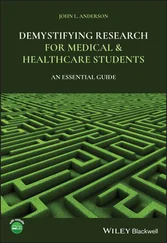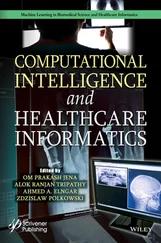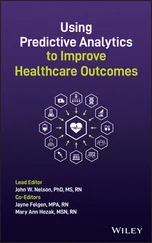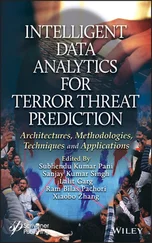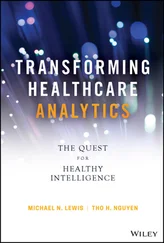Handbook on Intelligent Healthcare Analytics
Здесь есть возможность читать онлайн «Handbook on Intelligent Healthcare Analytics» — ознакомительный отрывок электронной книги совершенно бесплатно, а после прочтения отрывка купить полную версию. В некоторых случаях можно слушать аудио, скачать через торрент в формате fb2 и присутствует краткое содержание. Жанр: unrecognised, на английском языке. Описание произведения, (предисловие) а так же отзывы посетителей доступны на портале библиотеки ЛибКат.
- Название:Handbook on Intelligent Healthcare Analytics
- Автор:
- Жанр:
- Год:неизвестен
- ISBN:нет данных
- Рейтинг книги:4 / 5. Голосов: 1
-
Избранное:Добавить в избранное
- Отзывы:
-
Ваша оценка:
- 80
- 1
- 2
- 3
- 4
- 5
Handbook on Intelligent Healthcare Analytics: краткое содержание, описание и аннотация
Предлагаем к чтению аннотацию, описание, краткое содержание или предисловие (зависит от того, что написал сам автор книги «Handbook on Intelligent Healthcare Analytics»). Если вы не нашли необходимую информацию о книге — напишите в комментариях, мы постараемся отыскать её.
The book explores the various recent tools and techniques used for deriving knowledge from healthcare data analytics for researchers and practitioners. A Handbook on Intelligent Healthcare Analytics
Handbook on Intelligent Healthcare Analytics — читать онлайн ознакомительный отрывок
Ниже представлен текст книги, разбитый по страницам. Система сохранения места последней прочитанной страницы, позволяет с удобством читать онлайн бесплатно книгу «Handbook on Intelligent Healthcare Analytics», без необходимости каждый раз заново искать на чём Вы остановились. Поставьте закладку, и сможете в любой момент перейти на страницу, на которой закончили чтение.
Интервал:
Закладка:
The purpose of gathering information is to create strategies and tools that make it as simple and effective as possible to gather and verify a professional’s expertise. Experts tend to be critical and busy individuals, and the techniques followed would also minimize the time expended on knowledge collection sessions by each expert. The key form of the knowledge-based approach is an expert procedure, which is intended to mimic an expert’s thinking processes. Typical examples of specialist systems include bacterial disease control, mining advice, and electronic circuit design assessment. It currently refers to the planning, administration, and construction of a system centered on expertise. It operates in a broad variety of aspects of computer technology, including data baselines, data collection, advanced networks, decision-making processes, and geographic knowledge systems. This is a big part of software computing. Wisdom engineering also falls into connection with mathematical reasoning as well as a strong concern with cognitive science and social-cognitive engineering, where intelligence is generated by socio-cognitive aggregates (mainly human beings) and structured according to the way humans thought and logic operates. Since then, information engineering has been an essential technology for knowledge incorporation. In the end, the exponentially increasing World Wide Web generates a growing market for improved usage of knowledge and technological advancement.
1.2 Knowledge and Knowledge Engineering
1.2.1 Knowledge
Knowledge is characterized as abilities, (i) which the person gains in terms of practice or learning; theoretical or practical knowledge of a subject; (ii) what is known inside or as a whole; facts and information; or (iii) knowing or acquainted with the experience of life or situation. This knowledge is defined accordingly. The retrieval of information requires complex cognitive processes including memory, understanding, connectivity, association, and reasoning. Knowledge of a subject and its capacity for usage for a specific purpose are also used to suggest trustworthy comprehension. Information may be divided into two forms of knowledge: tacit and clear. Tacit knowledge is the awareness that people have and yet cannot get. Tacit knowledge is more relevant since it gives people, locations, feelings, and memories a framework. Efficient tacit information transfer typically requires intensive intimate correspondence and trust. The tacit understanding is not easily shared. Still, consciousness comprises patterns and culture that we still cannot comprehend. On the other hand, information, which is easy to articulate, is called explicit knowledge. Coding or codification is the tool used to translate tacit facts into specific details. The awareness expressed, codified, and stored in such media is explicitly facts. Explicit information. The most common simple knowledge sources are guides, manuals, and protocols. Audio-visual awareness may also be an example of overt intelligence, which is based on the externalization of human skills, motivations, and knowledge.
1.2.2 Knowledge Engineering
Edward Feigenbaum and Pamela McCorduck created Knowledge Engineering in 1983: To address difficult issues that typically need a great deal of human experience in the fields of engineering, knowledge engineering needs the integration of information of computer systems. In engineering, design information is an essential aspect. If the information is collected and held in the knowledge base, important cost and output gains may be accomplished. In a range of fields, information base content may be used as to reuse information in other ways for diverse goals, to employ knowledge to create smart systems capable of carrying out complicated design work. We shall disseminate knowledge to other individuals within an organization. While the advantages of information capture and usage are obvious, it has long been known in the AI world that knowledge is challenging to access from specialists. Second, the specialists do not remember and describe “tacit knowledge” effectively, and this operates subconsciously and, where it is not impossible, is difficult to overcome the problems arising from several subject matters that they learn. To elaborate, they have to know what it is called. Third, there are various prospects and points of view which include aggregation to provide a coherent view. Last, professionals create abstract concepts and shortcuts for which they cannot communicate. The area of information technology was created some 25 years ago to address such problems, and the role of the knowledge engineer was born. Since then, computer engineers have developed a variety of principles, methods, and tools that have improved the acquisition, use, and implementation of knowledge considerably.
1.3 Knowledge Engineering as a Modelling Process
There is also a consensus that the KBS construction approach may be used as a modeling operation. It is not intended to construct a cognitively appropriate model, but to build a model that offers similar results for problem-solving problems in the area of concern as seen in Figure 1.2.

Figure 1.2 Knowledge as modelling process.
Building a KBS requires building a programming model to acquire problem-solving capabilities like those of a domain specialist. This material is not directly available; therefore, it needs to be created and arranged.
1.4 Tools
Intelligence engineers make the more efficient and less bogus use of dedicated computational tools for the acquisition, simulation, and handling of intelligence. PC PACK is a versatile compilation of this programmed, commercially available as a package of knowledge technology tools that are designed to be tested on a wide range of projects. The aim is to consider the key characteristics of the domain. The method simulates how anyone should label a text page with different colors such as green for suggestions and yellow for attributes. The labeled text would immediately be placed in the PCPACK database to be applied to all other resources when the user has highlighted a document. The MOKA and Popular KADS Methodologies are supported by the CFPACK. It is also fully compliant with information engineering approaches and techniques. The CFPACK is a software suite that includes the following
1 (i) Protocol tool: It enables the discovery, recognition, and definition of interview transcripts, conclusions, and documentation that may be included in the knowledge base.
2 (ii) Ladder Tool: This allows hierarchies of knowledge elements such as meanings, features, procedures, and specifications to be developed.
3 (iii) Chart Tool: This allows users to build mobile networks of connections between data elements, such as process maps, maps of ideas, and cutting-edge diagrams.
4 (iv) Matrix Tool: This allows grids that show the connection and attributes of the elements to be developed and edited.
5 (v) Annotation tools: This facilitates the creation of sophisticated HTML annotations, with links to other sites and other knowledge templates automatically generated in the CFPACK.
6 (vi) Tool publisher: This allows the creation from a knowledge base of a website or some other information resource using a model-driven approach to optimize re-usability. MOKA, CommonKADS, and the 47-step protocol provide approaches to run a project from beginning to completion, as well as maintaining best practice.
1.5 What are KBSs?
A knowledge-based framework is a system that utilizes AI tools in problem-solving systems to assist human decision-making, understanding, and intervention.
Читать дальшеИнтервал:
Закладка:
Похожие книги на «Handbook on Intelligent Healthcare Analytics»
Представляем Вашему вниманию похожие книги на «Handbook on Intelligent Healthcare Analytics» списком для выбора. Мы отобрали схожую по названию и смыслу литературу в надежде предоставить читателям больше вариантов отыскать новые, интересные, ещё непрочитанные произведения.
Обсуждение, отзывы о книге «Handbook on Intelligent Healthcare Analytics» и просто собственные мнения читателей. Оставьте ваши комментарии, напишите, что Вы думаете о произведении, его смысле или главных героях. Укажите что конкретно понравилось, а что нет, и почему Вы так считаете.

